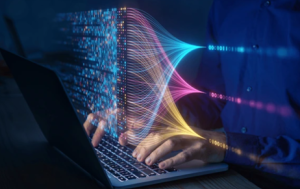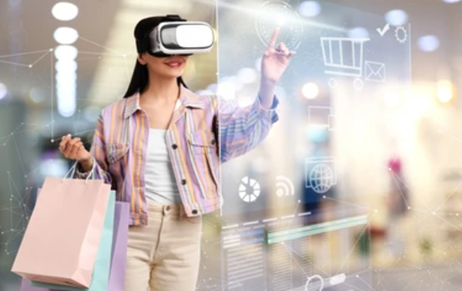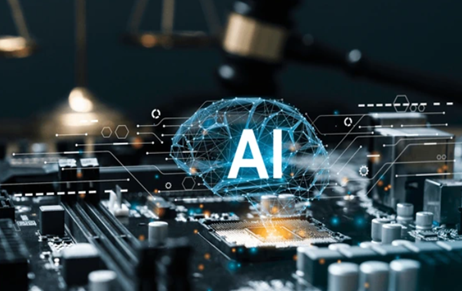In recent years, the world witnessed an exponential surge in the use of Artificial Intelligence…
Artificial Intelligence and its Negative Impact on Intellectual Property: A Basic Guide
Explore how AI affects patents, trademarks, and copyrights, raising legal and ethical concerns. Learn about AI-generated content, infringement risks, and IP law challenges.
Artificial Intelligence (AI) impacts Intellectual Property (IP) laws, raising legal and ethical challenges. AI can analyse data, create content, and perform tasks, but its role in IP creates ownership disputes. Patents face issues as AI-generated inventions, like in the DABUS case, challenge human inventor requirements. Trademarks risk infringement when AI-created logos or brand names resemble existing ones, and AI-driven counterfeit branding worsens market deception. Copyrights are at risk due to AI training on copyrighted material without permission, causing disputes over ownership and artistic integrity. AI-generated content, such as deep fake music mimicking artists like Drake and The Weekend, blurs legal rights. With AI’s rapid advancements, IP laws need urgent updates to address accountability, ownership, and fair usage rights, ensuring legal protection for creators while embracing AI-driven innovation.
What is Artificial Intelligence?
Artificial intelligence, also known as AI, is a collection of technologies that enables machines and gadgets to perform tasks like a human. Its variety of advanced functions allows it the ability to see and listen, understand complex situations, translate oral and written material, analyse data, and solve problems. AI was first started to help minimize the workload on humans and contribute toward a faster, better and easier method in problem solving.
What AI does?
AI is used across various fields such as data collection, problem solving, enhancing human productivity and work efficiency, repetitive tasks, completing tasks etc. Here’s a detail of some of the major tasks AI can do:
- AI can handle human tasks that require continuous attention and are time-consuming, allowing humans to be free from complex work hours.
Example: data entry, customer support
- AI helps analyze large and complex datasets, uncovering patterns and trends, aiding better decision making.
Example: risk management in finance
- AI provides personalized recommendations on user experience and preferences on platforms like Spotify, Netflix, YouTube, etc.
- Virtual assistants like Alexa, Siri and google assistant all rely on the use of AI to provide information, follow commands of user and even to give responses. These assistants, with the help of AI, can set alarms and reminders, browse information on the internet and even help the user control all smart devices through one single command.
- Particular AI help interpret and process visual data to create images and videos. AI Technology can also be Facial recognition and Biometrics systems.
- AI combination with machinery and engineered mechanical systems are used to build gadgets and robots that are interactive and human friendly. These machines can even mimic human behavior patterns, decision making skills, emotions, gestures at an expert level in required field.

What is Intellectual Property?
Intellectual property describes the set of intangible assets that are owned by an individual or a company. The concept of intellectual property explains the fact that certain ideas or products of human mind (intellect) should be given the same rights that apply to physical i.e. tangible property.
Intellectual property is legally protected from outside use or application without consent, of the owner, by a person or company. In India, intellectual property rights are governed under the following acts: Trade Marks Act, 1999. The Patents Act, 1970 (amended in 2005), and The Copyright Act, 1957. infringement of intellectual property occurs when an outside party engages in use of the asset, without any authorization. These assets don’t have any physical form as they are created using the human intellect. Such property can be in forms of ideas, artwork, symbols, logos, brand names, and designs.
The Three main types of intellectual property:
-
Patents:
The Patents Act of 19701, defines a patent as an exclusive right granted to the inventor for an invention. Patents help benefit the investors by providing legal protection to their inventions. These patents can be granted to inventions in any field of technology, from everyday household items to a nanotechnology chip. The invention can be a final product or even a process of a product.
Patents are given legal protection so that the invention cannot be commercially made, used, distributed, imported or even sold to others without the consent of the patent owner. In India, Intellectual Property Rights (IPR) like patents typically last for 20 years from the date of filing the application2. If any of these are violated by any third party, the patent owner can seek remedies in court for patent infringement.
-
Trademark:
A trademark is a distinctive sign, symbol, logo or design that is capable of distinguishing the goods or services of one organization from another. A word or combination of words, letters, numbers can make up a perfect trademark. But trademarks may also include symbols, shape and packaging of goods, non-visible signs like fragrance or sounds or even drawings – the possibilities to these are limitless.
Trademark registrations are usually for a term of 10 years but can be renewed with additional payment. The Trade Marks Act, 19993, governs trademark registration and protection in India.
-
Copyright:
Copyright is right given to the creators of original works of literary, dramatic, musical and artistic works and producers of cinematograph films and sound recordings3. In India, the Copyright Act, 19574 governs the subject of copyright law in India. Copyright serves as a legal protection, which ensures authors and creators, have control over their works are given fair compensation for their intellectual contribution and efforts.
Now let’s understand how AI negatively impacts these Intellectual Properties:
Although Artificial Intelligence brings various developments, it also poses as a significant challenge to Intellectual Property Laws. Due to the rapid growth of AI- generated content, intellectual property laws and rights face new legal and ethical challenges.
AI’s negative impact with respect to patents-
- The question that has been frequently asked, concerning AI’s involvement in Patent laws is “Who owns the Patent?”, as patent laws require a human inventor5.
- The DABUS case [Stephen L Thaler v. Comptroller General of Patents, Design and Trademark]6, highlighted the legal situation around AI-generated inventions and raised questions about whether AI can own intellectual property or if patent laws require reforms.
- Since AI cannot be considered an author under any law, disputes arise between the AI developer, user who prompted the AI and the original creator whose work may have trained the AI, as to who holds the legal ‘ownership’ of the AI -generated content like arts, music, or even texts.
AI’s negative impact with respect to trademarks-
- Logos, slogans and brand names created using AI tools may unintentionally bear resemblance to existing trademarks, which in turn will result into legal disputes, claiming infringement.
- Accountability of these dispute will also face challenges due to lack of authoritative figure.
- AI is also used in creating deepfake branding, which allows unauthorized replication of logos, packaging, designs, etc. Example- AI generated fake products on e-commerce sites, mimicking brands.
AI’s negative impact with respect to copyrights-
- AI models that are trained with the help of vast databases may include copyrighted works without appropriate licensing.
- Copyright law protects human created works whereas, AI-generated content blurs ownership rights.
- AI-generated music imitating famous artists, like the recent case of AI songs mimicking Drake and The Weekend, raises concerns about artistic integrity and copyright.
- AI systems might favour certain copyrighted materials over others, leading to biased content creation and unfair market advantages.
Author: Sneha parle, in case of any queries please contact/write back to us via email to chhavi@khuranaandkhurana.com or at IIPRD.
References:
- https://www.wipo.int/en/web/patents
- https://ipindia.gov.in/writereaddata/portal/ev/sections/ps53.html
- https://www.wipo.int/en/web/trademarks
- https://copyright.gov.in/documents/handbook.html
- https://www.wipo.int/edocs/mdocs/mdocs/en/wipo_webinar_frontiertech_2024_1/wipo_webinar_frontiertech_2024_1_p4.pdf
- https://www.scconline.com/blog/post/2020/12/26/the-curious-case-of-dabus-who-should-own-the-ai-related-inventions/



